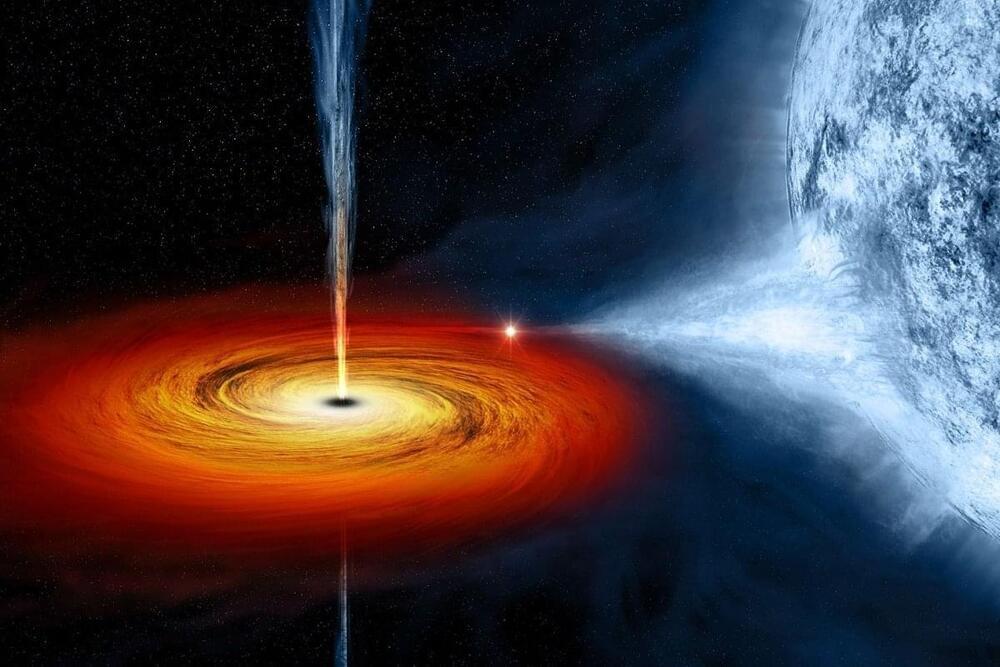Here are three key lessons my sister with Down syndrome has taught me — kindness, unconditional love and gratitude. They were her foundation to an optimistic life.

A U.S. House Intelligence Committee member cautioned that bioweapons using a target’s DNA to kill only that individual are being created. US Representative Jason Crow of Colorado spoke on Friday at the Aspen Security Forum and cautioned Americans not to be too careless about sharing their DNA with private firms due to the impending arrival of the new type of weapon. “You can target a biological weapon that will kill that person or take them off the battlefield or make them inoperable,” Crow said. “You can take someone’s DNA, you know, take their medical profile,” he added.
Given the prevalence of DNA testing services, where customers voluntarily share their genetic mapping with companies to learn more about their ancestry and health, the congressman said it is concerning that these weapons are being developed. Although 23andMe has maintained time and time again that it does not sell its customers’ private information, it is one of many DNA companies that have done so when asked by the police.
As a member of the Senate Armed Services Committee, US Senator Joni Ernst of Iowa claimed that the US’s adversaries may deploy such DNA bioweapons to attack food supply on a large scale. Ernst forewarned that specific animals relied upon by civilians, armies, or towns could be the target of biological weapons, resulting in scarcity and food poverty and weakening populations.

Using Newtonian physics, physicists have found an expression for the value of kinetic energy, specifically KE = ½ m v^2. Einstein came up with a very different expression, specifically KE = (gamma – 1) m c^2. In this video, Fermilab’s Dr. Don Lincoln shows how these two equations are the same at low energy and how you get from one to the other.
Relativity playlist:
Fermilab physics 101:
https://www.fnal.gov/pub/science/particle-physics-101/index.html.
Fermilab home page:
https://fnal.gov

Antoine Galand, Director of Technology, GraphWear
Nanotechnology was once the stuff of science fiction, but today the concept of creating devices and machines that are several thousand times smaller than the width of a human hair is a well-established fact. The rise of nanotechnology has already transformed industries ranging from consumer electronics to textile manufacturing and cosmetics by unlocking new materials and processes at the nanoscale. The device you’re reading this on, for example, is only possible because of techniques adopted in the semiconductor industry that enable us to pattern silicon and metals to create the microscopic circuits and switches that are at the heart of modern computers.
One of the most promising applications of our newfound ability to manipulate individual atoms and molecules is in healthcare, where the ability of doctors to treat disease has been hamstrung by relatively blunt “macro” solutions. The human body is a remarkably complex system where, fundamentally, nanoscale processes occurring inside cells are what determine whether we are sick or healthy. If we’re ever going to cure diseases like diabetes, cancer or Alzheimer’s, we need technologies that work at their scale. Although medical nanotechnologies are relatively new, they’re already impacting the way we diagnose, treat and prevent a broad range of diseases.
Ask medieval historian Michael McCormick what year was the worst to be alive, and he’s got an answer: “536.” Not 1,349, when the Black Death wiped out half of Europe. Not 1918, when the flu killed 50 million to 100 million people, mostly young adults. But 536. In Europe, “It was the beginning of one of the worst periods to be alive, if not the worst year,” says McCormick, a historian and archaeologist who chairs the Harvard University Initiative for the Science of the Human Past.
A mysterious fog plunged Europe, the Middle East, and parts of Asia into darkness, day and night—for 18 months. “For the sun gave forth its light without brightness, like the moon, during the whole year,” wrote Byzantine historian Procopius. Temperatures in the summer of 536 fell 1.5°C to 2.5°C, initiating the coldest decade in the past 2,300 years. Snow fell that summer in China; crops failed; people starved. The Irish chronicles record “a failure of bread from the years 536–539.” Then, in 541, bubonic plague struck the Roman port of Pelusium, in Egypt. What came to be called the Plague of Justinian spread rapidly, wiping out one-third to one-half of the population of the eastern Roman Empire and hastening its collapse, McCormick says.
Historians have long known that the middle of the sixth century was a dark hour in what used to be called the Dark Ages, but the source of the mysterious clouds has long been a puzzle. Now, an ultraprecise analysis of ice from a Swiss glacier by a team led by McCormick and glaciologist Paul Mayewski at the Climate Change Institute of The University of Maine (UM) in Orono has fingered a culprit. At a workshop at Harvard this week, the team reported that a cataclysmic volcanic eruption in Iceland spewed ash across the Northern Hemisphere early in 536. Two other massive eruptions followed, in 540 and 547. The repeated blows, followed by plague, plunged Europe into economic stagnation that lasted until 640, when another signal in the ice—a spike in airborne lead—marks a resurgence of silver mining, as the team reports in this week.
Studies of dense carbon materials formed by bolide impacts or produced by laboratory compression provide key information on the high-pressure behavior of carbon and for identifying and designing unique structures for technological applications. However, a major obstacle to studying and designing these materials is an incomplete understanding of their fundamental structures. Here, we report the remarkable structural diversity of cubic/hexagonally (c/h) stacked diamond and their association with diamond-graphite nanocomposites containing sp3-/sp2-bonding patterns, i.e., diaphites, from hard carbon materials formed by shock impact of graphite in the Canyon Diablo iron meteorite. We show evidence for a range of intergrowth types and nanostructures containing unusually short (0.31 nm) graphene spacings and demonstrate that previously neglected or misinterpreted Raman bands can be associated with diaphite structures. Our study provides a structural understanding of the material known as lonsdaleite, previously described as hexagonal diamond, and extends this understanding to other natural and synthetic ultrahard carbon phases. The unique three-dimensional carbon architectures encountered in shock-formed samples can place constraints on the pressure–temperature conditions experienced during an impact and provide exceptional opportunities to engineer the properties of carbon nanocomposite materials and phase assemblages.

